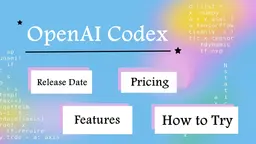Mistral 7B Funktionen
Mistral 7B ist ein leistungsstarkes Open-Source-Sprachmodell mit 7 Milliarden Parametern, das größere Modelle übertrifft und gleichzeitig effizienter und anpassbarer ist.
Mehr anzeigenHauptfunktionen von Mistral 7B
Mistral 7B ist ein Sprachmodell mit 7,3 Milliarden Parametern, das größere Modelle wie Llama 2 13B in verschiedenen Benchmarks übertrifft. Es verfügt über eine Sliding-Window-Attention für eine effiziente Verarbeitung langer Sequenzen, gruppierte Abfrage-Attention für schnellere Inferenz und eine flexible Architektur, die für verschiedene Aufgaben feinabgestimmt werden kann. Mistral 7B ist Open Source unter der Apache 2.0-Lizenz und ermöglicht uneingeschränkte Nutzung und Modifikation.
Überlegene Leistung: Übertrifft Llama 2 13B in allen Benchmarks und übertrifft sogar Llama 1 34B in vielen Aufgaben, obwohl es weniger Parameter hat.
Sliding-Window-Attention: Verwendet einen Sliding-Window-Attention-Mechanismus mit 4.096 Token, der eine effiziente Verarbeitung langer Sequenzen mit linearer Rechenleistung ermöglicht.
Gruppierte Abfrage-Attention: Implementiert gruppierte Abfrage-Attention für schnellere Inferenzzeiten im Vergleich zu standardmäßigen Voll-Attention-Modellen.
Vielseitige Architektur: Entwickelt, um leicht für verschiedene Aufgaben wie Chatbots, Code-Generierung und domänenspezifische Anwendungen feinabgestimmt zu werden.
Open Source: Wurde unter der Apache 2.0-Lizenz veröffentlicht, die kostenlose Nutzung, Modifikation und Weiterverbreitung für akademische und kommerzielle Zwecke ermöglicht.
Anwendungsfälle von Mistral 7B
Chatbots und Virtuelle Assistenten: Kann feinabgestimmt werden, um konversationale KI-Agenten für den Kundensupport, persönliche Assistenz oder Informationsabruf zu erstellen.
Code-Generierung und -Analyse: In der Lage, Code in mehreren Programmiersprachen zu verstehen und zu generieren, nützlich für die Unterstützung bei der Softwareentwicklung.
Inhaltserstellung: Kann verwendet werden, um Artikel, Marketingtexte, kreatives Schreiben und andere Formen von Textinhalten zu generieren.
Sprachübersetzung: Kann mit entsprechender Feinabstimmung für maschinelle Übersetzung zwischen verschiedenen Sprachen verwendet werden.
Textzusammenfassung: Kann lange Dokumente oder Artikel in prägnante Zusammenfassungen verdichten, nützlich für Forschung und Informationsverarbeitung.
Vorteile
Hohe Leistung im Verhältnis zur Modellgröße
Effiziente Verarbeitung langer Sequenzen
Open Source mit permissiver Lizenz
Vielseitig und leicht feinabstimmbar
Nachteile
Kann Einschränkungen in spezialisierten Wissensbereichen im Vergleich zu größeren Modellen haben
Erfordert erhebliche Rechenressourcen für Bereitstellung und Feinabstimmung
Potenzial für Missbrauch oder Generierung von voreingenommenen/schädlichen Inhalten, wenn nicht richtig eingeschränkt
Beliebte Artikel

Google Veo 3: Erster KI-Videogenerator mit nativer Audio-Unterstützung
May 28, 2025

Top 5 kostenlose AI NSFW Freundin Chatbots, die Sie ausprobieren sollten – AIPUREs echter Testbericht
May 27, 2025

SweetAI Chat vs. CrushOn.AI: Das ultimative NSFW-KI-Freundin-Duell im Jahr 2025
May 27, 2025

OpenAI Codex: Erscheinungsdatum, Preise, Funktionen und wie Sie den führenden KI-Coding-Agenten ausprobieren können
May 19, 2025
Mehr anzeigen







